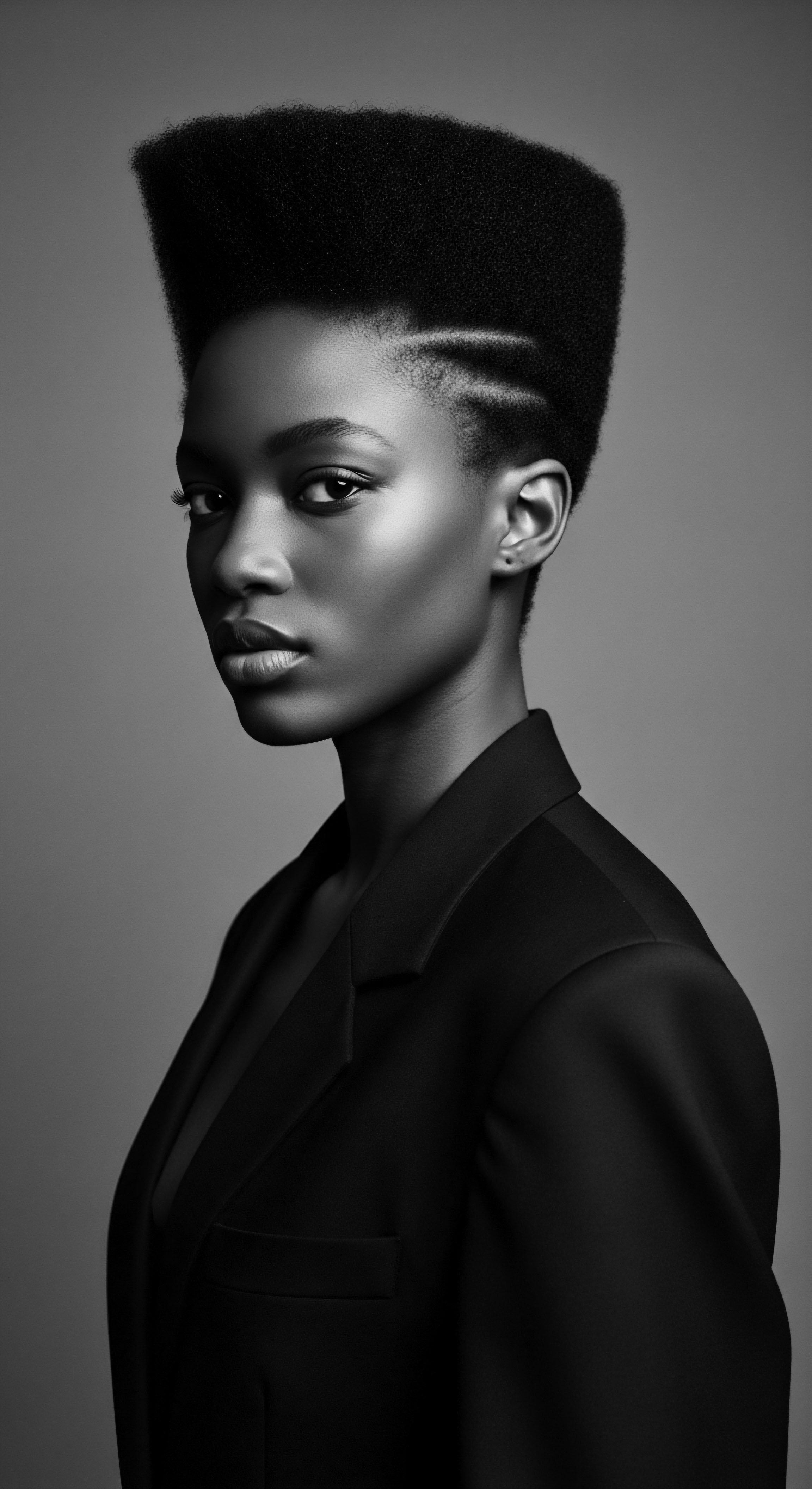
Fundamentals
The concept of Hair Biology Protection stands as a foundational understanding of the intricate mechanisms that shield our strands from the relentless forces of the external world, ensuring their vitality and structural integrity. For those of us who carry the legacy of textured hair, this understanding is not merely a scientific pursuit; it is a profound echo of ancestral wisdom, a recognition of the inherent resilience encoded within each curl and coil. Across generations, communal knowledge has safeguarded our hair, even when formal scientific explanations lay beyond reach. The protection of hair, in its most elemental interpretation, speaks to the very fiber of our being.
At its simplest, Hair Biology Protection refers to the collective physical and chemical safeguards inherent in the hair shaft, alongside the external measures we employ to fortify it. The outermost shield of a single hair strand, the Cuticle, forms a delicate yet formidable barrier. Composed of overlapping, dead cells, this layer acts like a natural suit of armor, regulating moisture exchange and providing a defense against the intrusion of damaging elements from the environment.
When this protective layer is compromised, the hair becomes susceptible to dehydration, mechanical stress, and chemical assault. The hair’s deeper layers, the cortex and medulla, rely on the cuticle’s integrity to maintain their strength and elasticity, which are vital for the hair’s overall health and appearance.
Understanding Hair Biology Protection begins with recognizing the hair’s inherent protective architecture and the ancestral practices that intuitively upheld these safeguards across generations.

Inherent Safeguards of the Hair Strand
Within the very architecture of hair, protective measures exist. The Keratin Proteins, the building blocks of our hair, contribute to its structural strength and flexibility. These proteins, particularly those in the cortex, are held together by various bonds, including hydrogen and disulfide bonds, which grant hair its unique mechanical properties and resistance to external forces.
The naturally occurring lipids, including fatty acids, ceramides, and cholesterols, also play a significant part, forming a protective barrier that helps ward off external factors and maintain moisture balance. This lipid layer is especially critical for textured hair, which, despite having a relatively high overall lipid content, often contends with dryness due to its unique structural morphology and inability for sebaceous oils to travel down the hair shaft as readily as in straight hair.
Indigenous communities, long before the advent of microscopes or laboratories, held an intuitive grasp of these principles. Their practices often focused on nourishing the scalp and preserving the hair’s external layer, recognizing the signs of strain and responding with thoughtful care.
- Scalp Health ❉ Healthy hair begins with a healthy scalp. Ancestral traditions consistently prioritized scalp care through gentle cleansing and the application of natural oils and herbs to maintain a balanced environment for hair growth.
- Moisture Preservation ❉ Traditional hair care rituals often centered on infusing and sealing moisture within the hair shaft, using ingredients such as shea butter, coconut oil, and various plant extracts to prevent dryness and brittleness. This intuitively supported the cuticle’s barrier function.
- Physical Shielding ❉ Protective styles like braids, twists, and locs, deeply rooted in African heritage, physically shielded hair from environmental exposure and minimized manipulation, thus preserving the cuticle’s integrity and reducing mechanical damage.
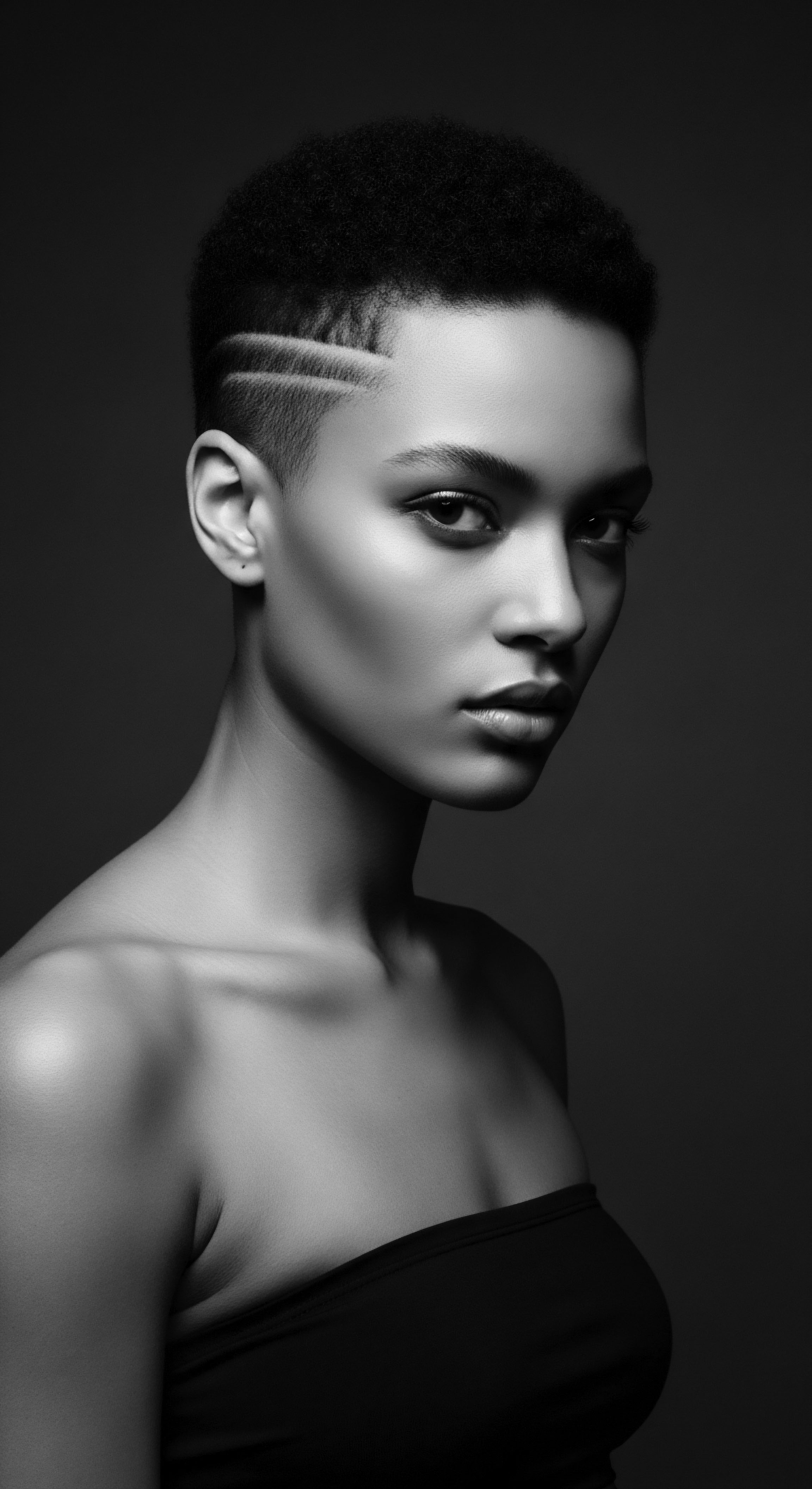
Intermediate
Moving beyond fundamental aspects, the intermediate understanding of Hair Biology Protection invites us to consider the dynamic interplay between the hair’s inherent design and the environmental stressors that seek to compromise its strength. Textured hair, with its unique helical structure and elliptical cross-section, possesses inherent qualities that necessitate a mindful approach to protection. This hair type, often characterized by its beautiful bends and coils, is also more susceptible to points of weakness along the shaft where the cuticle can lift, leading to increased porosity and vulnerability to damage. This makes moisture retention a persistent challenge, a truth long understood by those who carry this crown.
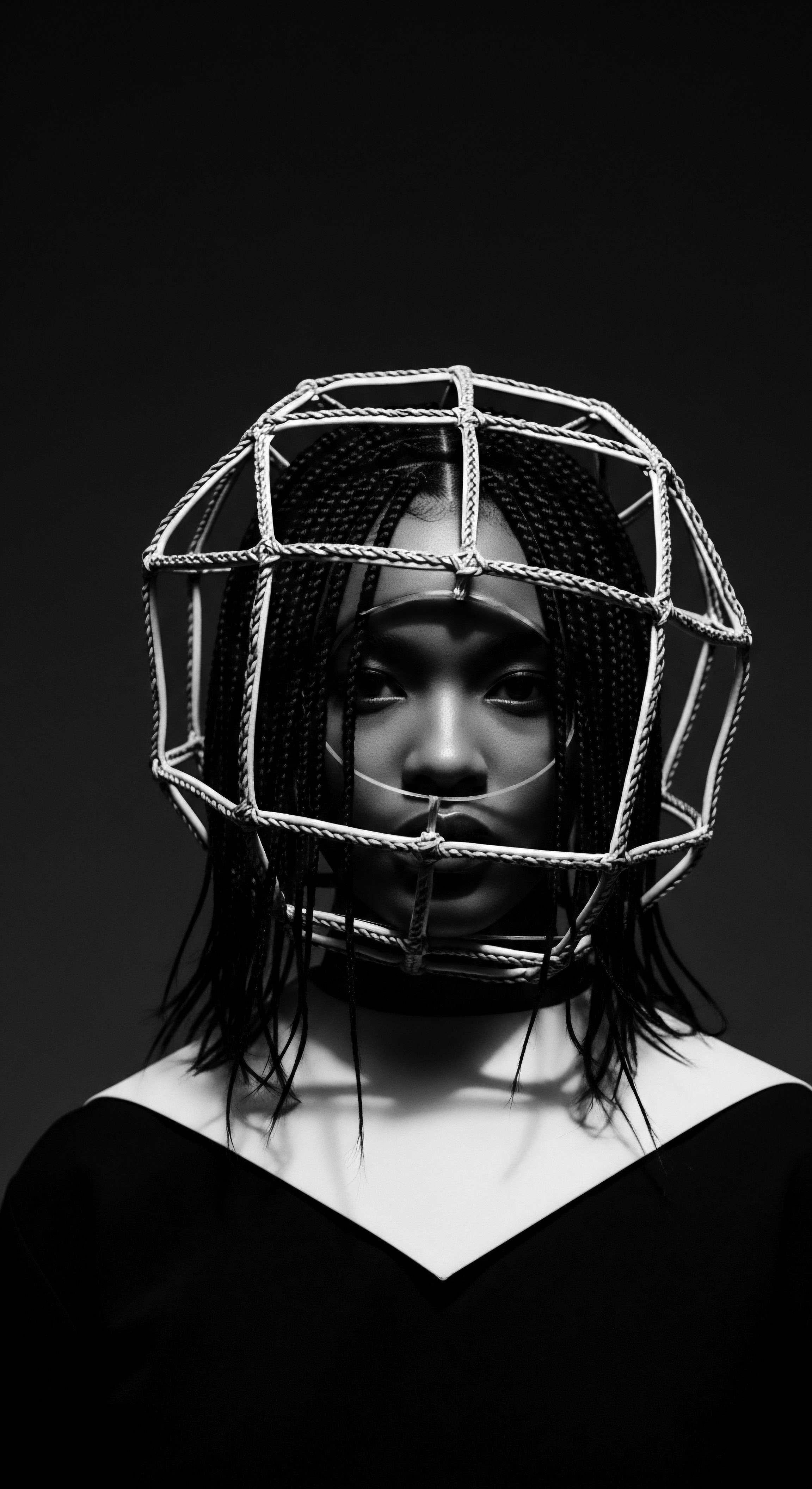
Environmental and Mechanical Vulnerabilities
The hair’s biology, regardless of texture, faces numerous external threats. Ultraviolet radiation from the sun, for instance, affects the hair’s cuticle and surface, diminishing lipid content and reducing tensile strength. Prolonged sun exposure can also oxidize melanin, decreasing its photoprotective function within the hair’s cortex.
Air pollution, too, leaves its mark; particulate matter can bind to the hair surface and infiltrate the follicle, potentially affecting growth and texture. These environmental factors, combined with mechanical stresses from daily styling practices, such as combing, brushing, and friction, contribute to the erosion of the cuticle, leading to a dull appearance, tangling, and breakage.
Hair Biology Protection, particularly for textured hair, is a dance between inherited structural predispositions and the adaptive strategies developed over centuries to counter environmental and mechanical duress.
For generations, communities with textured hair have intuitively developed methods to counteract these vulnerabilities. Their practices were not only about aesthetics; they were acts of biological protection, responses to the lived realities of hair susceptible to drying and breakage.

Protective Styling ❉ A Legacy of Ingenuity
The historical and cultural significance of Protective Styles within Black and mixed-race communities cannot be overstated. These styles, such as Cornrows, Braids, and Locs, represent a living archive of biological protection and cultural continuity. They served a practical purpose, shielding the delicate strands from harsh elements and minimizing daily manipulation, which inherently reduces mechanical damage. Beyond this practical utility, these styles communicated identity, social status, and spiritual connection in many African societies.
Consider the ingenuity born from necessity. During the transatlantic slave trade, the rich traditions of Black hair were systematically suppressed, and European beauty standards were imposed, often with devastating effects on hair health and cultural identity. Yet, even under such immense pressure, people found ways to adapt and resist. Enslaved people, stripped of their traditional tools and ingredients, innovated with what was available to manage their hair.
For instance, in the late 19th and early 20th centuries, some African-American women, lacking access to appropriate combs for their coiled hair, resorted to using Eating Forks, sometimes even heated over stoves as makeshift hot combs. They also utilized mixtures of lard and lye for straightening, and ingeniously crafted rollers from cut-up Prince Albert Tobacco Tins wrapped in brown paper bags to achieve desired curls. These practices, while certainly harsh and reflective of a coerced assimilation into Eurocentric beauty ideals, also illustrate a deep, if desperate, drive for hair management and an attempt at “protection” from societal judgment.
The continuation and revival of protective styles today serve as a powerful testament to this enduring legacy. They allow for length retention and reduce exposure to daily stressors, acting as an active form of biological protection that respects hair’s natural growth cycles.
| Era/Context Pre-Colonial Africa |
| Challenges to Hair Biology Protection Environmental exposure (sun, dust), mechanical wear from daily activities. |
| Ancestral/Adaptive Practices (Biological Protection Link) Intricate braiding patterns for physical shielding, natural butters and oils (e.g. shea butter, coconut oil) for moisture and lipid barrier. |
| Era/Context Slavery & Post-Emancipation (19th-early 20th C.) |
| Challenges to Hair Biology Protection Forced suppression of traditional practices, lack of appropriate tools/ingredients, societal pressure for straightened hair, increased breakage and dryness due to harsh methods. |
| Ancestral/Adaptive Practices (Biological Protection Link) Ingenious use of eating forks as combs, heated tobacco tins as rollers, lard/lye mixtures for straightening. These were adaptations, however harmful, to manage hair and navigate a hostile social landscape. |
| Era/Context Modern Natural Hair Movement |
| Challenges to Hair Biology Protection Damage from chemical treatments, heat styling, desire to restore natural texture, environmental stressors. |
| Ancestral/Adaptive Practices (Biological Protection Link) Re-emphasis on protective styles (braids, twists, locs) for length retention and reduced manipulation; use of plant-based products validating ancestral wisdom; focus on moisture-protein balance. |
| Era/Context The journey of Hair Biology Protection across generations reflects both profound resilience and a continuous search for methods to honor and sustain textured hair. |

Academic
At an academic level, Hair Biology Protection signifies a complex, interwoven system of inherent biophysical properties and molecular defense mechanisms within the hair fiber, coupled with the strategic application of external interventions, all aimed at preserving the structural integrity and functional viability of the hair shaft. This concept is especially pertinent when examining textured hair, where unique morphological features present specific challenges and inform distinct protective requirements. The underlying meaning here extends beyond mere cosmetic preservation, encompassing a sophisticated understanding of macromolecular stability, lipidomics, and the dynamic interaction between the hair fiber and its biochemical and physiochemical surroundings.
The delineation of Hair Biology Protection involves an exhaustive examination of the hair’s hierarchical structure. The Cuticle, a layer of overlapping cells akin to shingles on a roof, represents the primary interface with the external environment. Its integrity is critical for maintaining the hair’s hydrophobicity and regulating moisture content. Damage to the cuticle, whether from mechanical abrasion, excessive heat exposure, or chemical treatments, renders the more vulnerable Cortex exposed, leading to protein loss, diminished tensile strength, and increased porosity.
The Cortex itself, comprising the majority of the hair’s mass, derives its remarkable strength and elasticity from tightly packed keratin fibers, cross-linked by disulfide bonds. The medulla, the innermost core, contributes to volume and thermoregulation, influencing the hair’s overall physical properties.
The academic pursuit of Hair Biology Protection illuminates the intricate molecular dance that underlies hair’s resilience, a dance that often mirrors the wisdom of ancestral care.
Scientific investigations reveal that textured hair, often characterized by its unique elliptical cross-section and high degree of curvature, presents distinct biomechanical properties that differentiate its protective needs. This curvature creates points of weakness along the hair shaft, making textured hair more susceptible to mechanical damage and breakage than straight hair. Furthermore, the coiling of textured hair impedes the even distribution of natural sebum from the scalp along the entire strand, contributing to chronic dryness and increased porosity. This structural reality underscores why moisture retention has consistently been a paramount concern within Black and mixed-race hair care traditions.

The Biomechanical Reality of Textured Hair and Ancestral Solutions
Research indicates that the inherent fragility of textured hair, particularly in the 4A-4C categories, leads to higher rates of breakage and lower moisture content. This structural predisposition, while lending itself to incredible aesthetic diversity, also presents a significant challenge to biological preservation. A study published in Preprints.org in 2024, examining natural ingredients for textured hair UV protection, notes that the “relatively low content of fibrous proteins in African hair could be a contributing factor to the susceptibility to breakage”. This biological insight offers a partial explanation for the historical emphasis on low-manipulation styles and intensive moisturizing practices within communities with textured hair.
The long-standing tradition of Protective Styling serves as a compelling historical example of applied Hair Biology Protection. Styles like Cornrows, Braids, and Twists, passed down through generations, were not merely decorative. They served as sophisticated biological shields, minimizing exposure to environmental aggressors and reducing the need for daily manipulation, thereby preserving the cuticle and preventing mechanical stress.
The strategic use of extensions in these styles, historically and contemporarily, further reduces tension on the natural hair, allowing it to rest and grow unhindered. This reflects a deep, empirical understanding of hair biology ❉ by reducing external stressors and maintaining a stable environment, the hair’s natural protective mechanisms can function optimally, minimizing protein loss and breakage.
Moreover, the traditional use of various botanical elements in African and diasporic hair care practices finds scientific validation in their contribution to Hair Biology Protection.
- Shea Butter ❉ Derived from the African karite tree, shea butter has been utilized for millennia for its moisturizing and emollient properties. Academically, shea butter’s high fatty acid content allows it to penetrate the hair shaft, acting as a sealant to lock in moisture and increase softness. This directly supports the hair’s lipid barrier, reducing hygral fatigue (repeated swelling and shrinking from moisture fluctuations) and preventing water loss, which are common issues for porous textured hair.
- Chebe Powder ❉ A traditional Chadian practice involves applying an herb-infused mixture, known as Chebe, to the hair weekly. This practice, often combined with braiding, is associated with extreme length retention by sealing the hair and reducing breakage. While formal Western scientific studies on Chebe are still emerging, its effectiveness points to a physical encapsulation and lubrication of the hair shaft, preventing mechanical damage and moisture evaporation, thereby bolstering the hair’s biological defenses.
- Natural Oils (Coconut, Castor, Marula, Baobab, Mongongo) ❉ Across Africa and its diaspora, a plethora of natural oils have been used. From an academic perspective, oils can penetrate the hair fiber, reducing the amount of water absorbed and thereby minimizing hygral fatigue. They also fill gaps between cuticle cells, forming a protective film that hinders the penetration of aggressive substances. Mongongo oil, for instance, has been shown to form a protective film on hair when exposed to UV radiation, acting as a natural film former. This highlights a natural, bio-based approach to UV protection, a significant aspect of Hair Biology Protection.
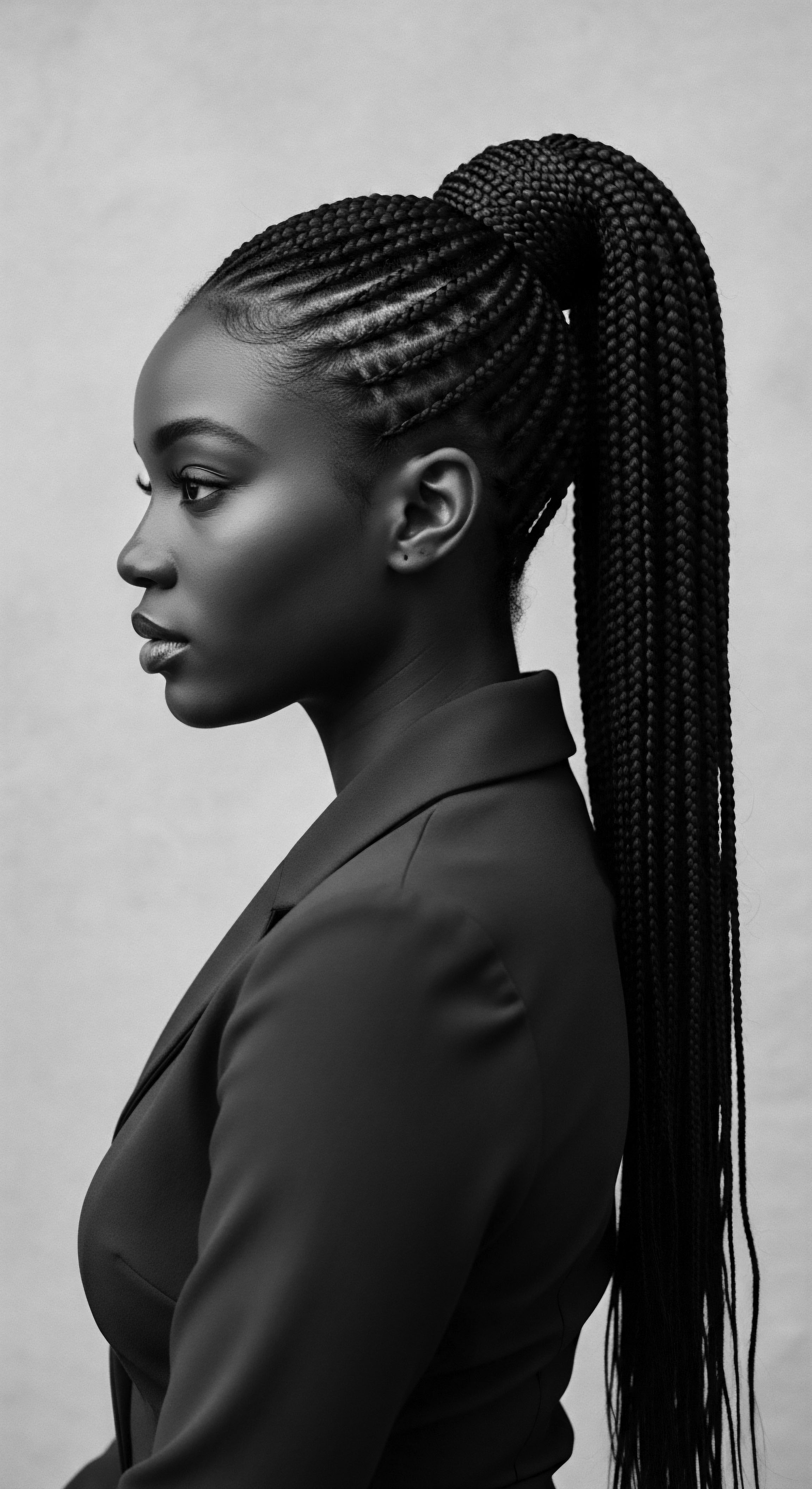
Interconnectedness ❉ Culture, Science, and Health
The understanding of Hair Biology Protection is deeply intertwined with the broader discourse on hair health disparities and the need for culturally informed care. The historical pressures to conform to Eurocentric beauty standards led to the widespread use of chemical relaxers and excessive heat, which, while achieving a desired aesthetic, significantly compromised the biological integrity of textured hair. Chemical relaxers, for instance, remove lipids from the cuticle and damage the cell-membrane complex, making the hair fiber more porous and decreasing its tensile strength. This historical context underscores the importance of a holistic approach to Hair Biology Protection, one that acknowledges both biological vulnerability and socio-cultural influences.
Contemporary research continues to affirm the wisdom embedded in ancestral practices. For instance, studies on hair porosity note that textured hair tends to be more porous due to its curvilinear nature, which leads to cuticle lifting at various points along the fiber. The traditional methods of sealing the hair with oils and creams, often referred to as the LOC (Liquid, Oil, Cream) or LCO (Liquid, Cream, Oil) Methods, are now recognized as effective strategies to retain moisture in highly porous hair, directly supporting Hair Biology Protection by preserving the hair’s hydration levels and minimizing cuticle damage. This confluence of ancient practice and modern scientific validation paints a compelling picture of a knowledge system that transcends time.

Reflection on the Heritage of Hair Biology Protection
The ongoing exploration of Hair Biology Protection is far more than a scientific inquiry; it is a profound meditation on textured hair, its heritage, and its care. It represents a living, breathing archive of human resilience and ingenuity. From the elemental biology of the strand, whispering echoes from the source of our very being, we perceive the inherent strength and gentle vulnerabilities passed down through ancestral lineages. The protective layers of the cuticle, the robust architecture of the cortex, and the unique properties of natural lipids all speak to a design that, while beautiful in its diversity, requires careful tending, especially for the nuanced curves and coils that define textured hair.
The journey from ancient practices to contemporary understanding unveils a tender thread of wisdom, woven through centuries of lived experience. Whether it was the communal artistry of braiding in ancestral villages, creating a physical shield against the elements, or the resourceful application of plant-based elixirs like shea butter and potent oils, each act of care contributed to a deep, embodied knowledge of biological preservation. Even the challenging adaptations born of necessity, such as the ingenious, albeit harsh, use of household items for styling under duress, underscore an unwavering commitment to hair as an extension of identity and dignity.
Looking forward, Hair Biology Protection guides us toward an unbound helix, a future where respect for heritage and scientific understanding coalesce to shape practices that truly honor textured hair. It compels us to move beyond mere cosmetic ideals, encouraging a deeper appreciation for the unique biological needs of our hair. This continuous learning, informed by both molecular insights and the generational wisdom of our forebears, empowers us to cultivate hair care rituals that truly nourish, protect, and celebrate the magnificent crowns we wear. The conversation around Hair Biology Protection for textured hair is a testament to the enduring power of knowledge, ancestral connection, and the unwavering spirit of those who have always recognized their hair as a sacred part of their story.
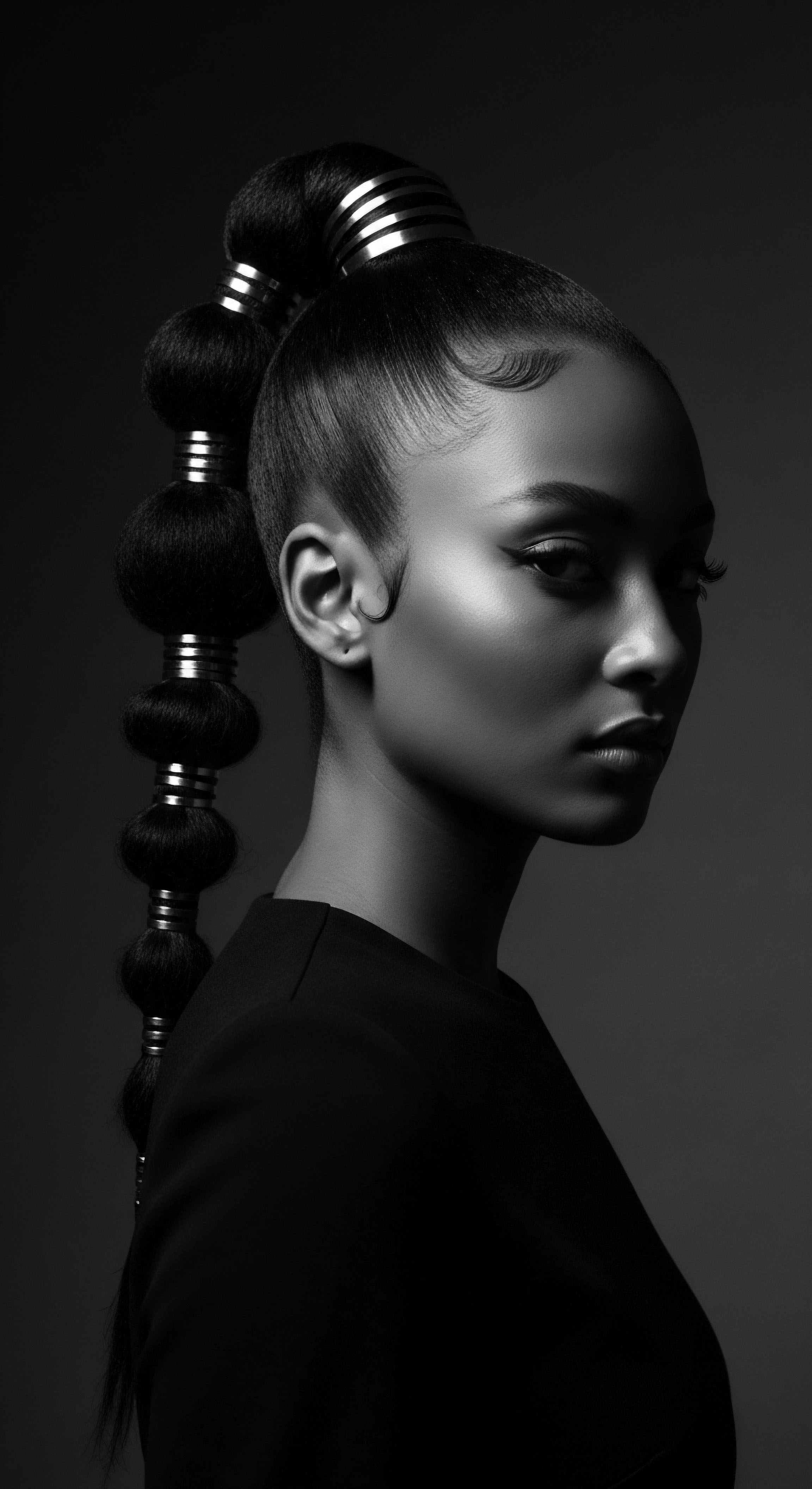
References
- Audrey Davis-Sivasothy. The Science of Black Hair ❉ A Comprehensive Guide to Textured Hair Care. 2011.
- Buffoli, B. Rinaldi, F. Labanca, M. Sorbellini, E. Trink, A. Guanziroli, E. Rezzani, R. & Rodella, L.F. The human hair ❉ From anatomy to physiology. International Journal of Dermatology, 2014, 53(3), 331–341.
- Caffrey, C. Afro-textured hair. EBSCO Research Starters, 2023.
- Gopika, P.N. & Thomas, B. A UPDATED REVIEW ON EXPLORING THE ROLE OF MEDICINAL PLANTS IN SCALP AND HAIR WELLNESS. EPRA International Journal of Multidisciplinary Research (IJMR), 2024, 10(4), 163–172.
- Higgins, C.A. Westgate, G.E. & Jahoda, C.A. From telogen to exogen ❉ Mechanisms underlying formation and subsequent loss of the hair club fiber. Journal of Investigative Dermatology, 2009, 129(9), 2100–2108.
- Kushner, A.B. & Maibach, H.I. Hair ❉ Cosmetics and clinical implications. Dermatologic Therapy, 2018, 31(2), e12558.
- Loussouarn, G. et al. Hair texture and ethnic origin. International Journal of Cosmetic Science, 2005, 27(1), 1-13.
- Martel, J.L. Miao, J.H. Badri, T. & Fakoya, A.O. Anatomy, hair follicle. StatPearls Internet, 2017.
- Nascimento, S. et al. Hair Cosmetics ❉ An Overview. Journal of Clinical and Aesthetic Dermatology, 2017, 10(10), 14–22.
- Ogunlabi, E.O. & Mofikoya, B.O. Cosmetic Ethnobotany Used by Tribal Women in Epe Communities of Lagos State, Nigeria. Juniper Online Journal of Biological and Medical Sciences, 2024, 15(3), 100-104.
- Omodele, R.F. Hair Care Practices from the Diaspora ❉ A Look at Africa, America, and Europe. Medium, 2025.
- Panayiotou, A. et al. On Hair Care Physicochemistry ❉ From Structure and Degradation to Novel Biobased Conditioning Agents. Polymers, 2022, 14(18), 3845.
- Patel, J. & Kroumpouzos, G. Historical Perspectives on Hair Care and Common Styling Practices in Black Women. Cutis, 2025, 115(3), 171-174.
- Priya, V. et al. An Ethnobotanical Study of Medicinal Plants Traditionally Used for Treatment of Hair Problems in Nuapadhi Village from Baleswar. Asian Journal of Pharmacy and Medical Science, 2024, 6(1), 87-94.
- Ramamurthi, S. et al. The biology of hair care. Journal of Cosmetic Science, 2009, 60(2), 263-272.
- Robbins, C.R. Chemical and Physical Behavior of Human Hair. Springer Science & Business Media, 2012.
- Sharma, V.K. et al. Commonly used hair oils in the Black community ❉ a narrative review in their use to treat androgenetic alopecia. Journal of the National Medical Association, 2023, 115(2), 232-239.
- Singh, J. et al. An Ethnobotanical Survey of Medicinal Plants used in the Treatment and Care of Hair in Karia ba Mohamed (Northern Morocco). Journal of Herbal Medicine, 2020, 20(3), 100-109.
- Sumathi, K.L. et al. Exploring the Use of Natural Ingredients for Textured Hair UV Protection. Preprints.org, 2024.
- Tharps, L. & Byrd, A. Hair Story ❉ Untangling the Roots of Black Hair in America. St. Martin’s Griffin, 2002.
- The Genomic Variation in Textured Hair ❉ Implications in Developing a Holistic Hair Care Routine. Cosmetics, 2024, 11(3), 83.
- Tricolor, A. The Hair Biology Primer ❉ Understanding Hair Structure. MDhair, 2025.
- Wagner, M.J. Heavy is the Head ❉ Evolution of African Hair in America from the 17th c. to the 20th c. Library of Congress, 2002.
